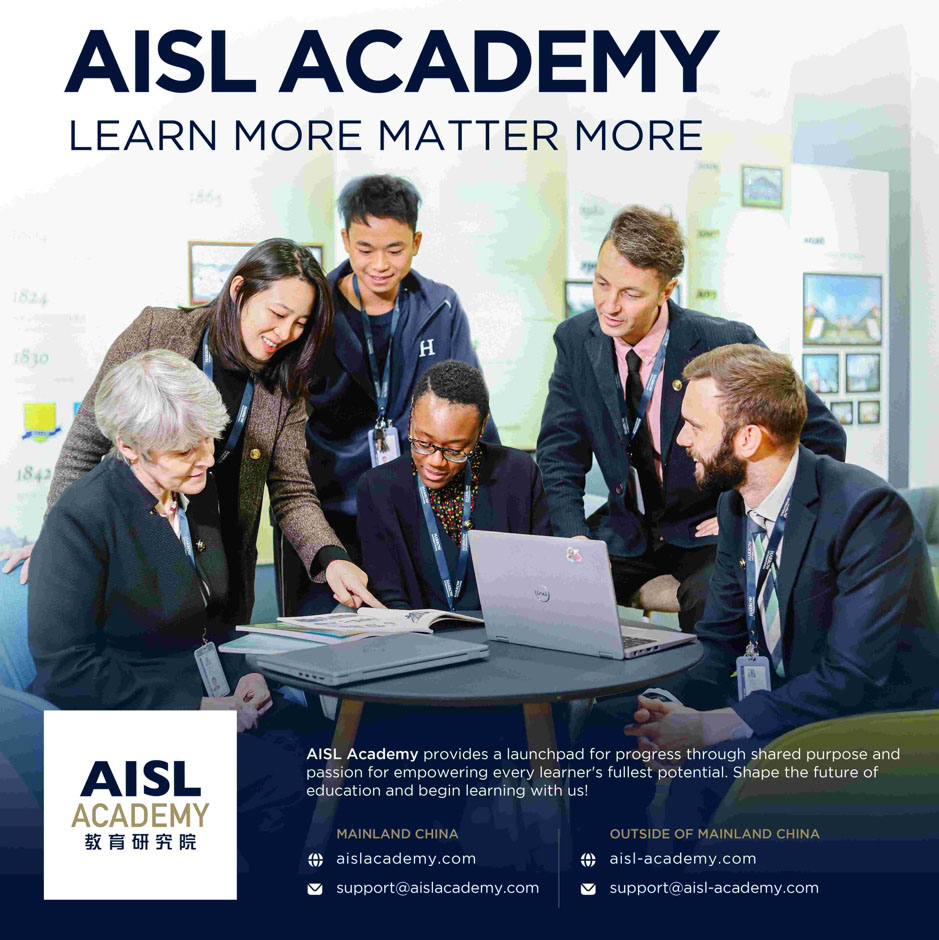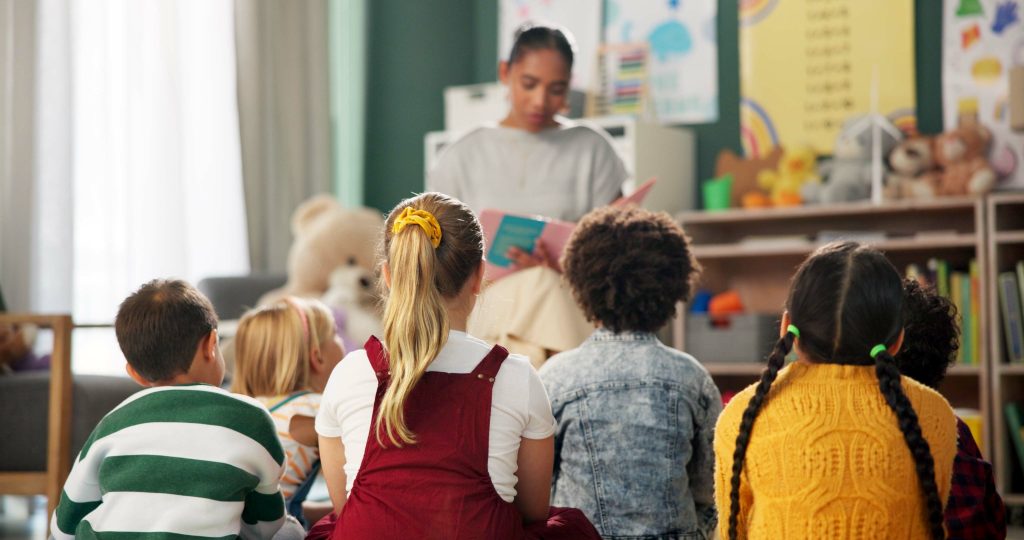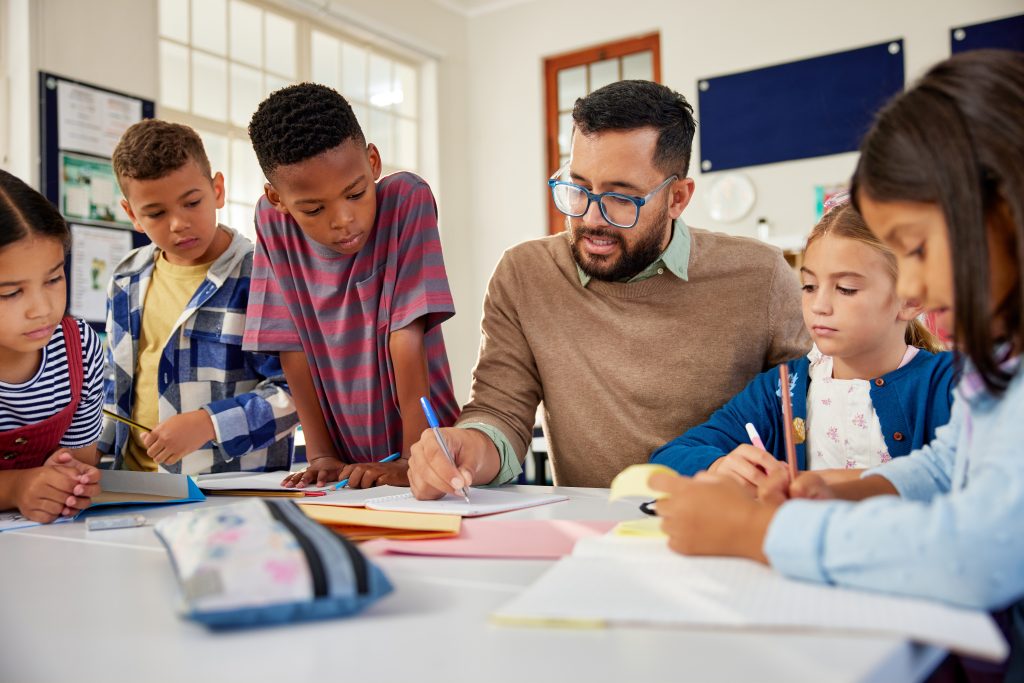Safer Internet Day 2024 focuses on understanding how online behaviour has changed, this includes covering young people’s perspective on new and emerging technology. I thought I would embrace “new technology” and use Artificial Intelligence and ask ChatGPT how it would define Online Safety for Schools.
Perhaps we need to address this challenge by abandoning the collocation of “online learning” altogether. It seems apt at this stage of digital transformation to refer to technology-enabled or enhanced learning as simply “learning”. Learning technology is becoming progressively more invisible in the same way that an overhead projector became invisible; we look at the projection and not at the tool as learners. How, then, do we foster learning experiences which embrace technology in a way that makes it somewhat invisible so that learners can focus on generating meaning in a social and productive manner to foster skills that are relevant and transferrable?
However, with far more emphasis on online safety within “Keeping Children Safe in Education”, the new requirement of specific online safety education adds to the importance of receiving the most up-to-date, relevant, and appropriate online safety training.
Regardless of any school’s location around the world, students grow up with access to computers, gaming devices and smart phones and full access to the internet. This makes the Internet more accessible and has become so important for remote learning during the pandemic. In fact, we have seen a huge increase in usage and screen time. Furthermore, most students love to explore and experiment with social media, apps, games, and gaming communities thus, British and International Schools now require specific bespoke online safety workshops for students, staff, and parents, along with guidance on creating and maintaining policies to keep students, staff, and the school safe.
“Online safety for schools is the proactive effort to create a secure digital environment for students and staff. It involves educating and enforcing measures to prevent cyberbullying, safeguard personal information, and promote responsible online behaviour, ensuring a safe and supportive virtual learning environment.”

ONLINE SAFETY FOR SCHOOLS
Online safety for schools is far more involved and needs far more clarification. Online safety within safeguarding is certainly now very much “standalone” and requires specific training/workshops for the whole school, staff, students & parents. “Keeping Children Safe in Education” (UK), prioritises online safety training for all schools, and robust filtering & monitoring in schools, therefore schools should now consider online safety as a statutory requirement as well as “Best Practice.” Online safety workshops are of paramount importance irrespective of country or location. All children, teenagers, and young adults use devices, social media/apps / online games which can have a massive impact on their safety, future goals, and targets (cyber vetting for employment & universities). Bespoke online safety training/workshops should be considered a safeguarding necessity as well as a legal priority pending any inspection by the schools inspectorate.
Technology advances at an alarming rate and allows for more advance ways to exploit children and young adults in the “online” world. It is so important for teachers, parents and carers to be achieving best practice in online safety in schools. Online Safety isn’t just about online stranger danger, certainly this is still as important as ever, but topics to be covered with students, parents and teachers must include the following:

ChatGPT is quite correct about online safety creating a secure digital environment for students and staff – educating and enforcing measures to prevent exploitation, and promoting responsible online behaviour, but how? We need to encourage meaningful discussions about how to create a safer digital environment, emphasising the importance of understanding the challenges young individuals face online and fostering their emotional and mental health in the digital age.
THE PROMOTION OF “BEST PRACTICES” IN SCHOOLS MUST INCLUDE “ONLINE SAFETY” BY INCORPORATING THE FOLLOWING METHODS:
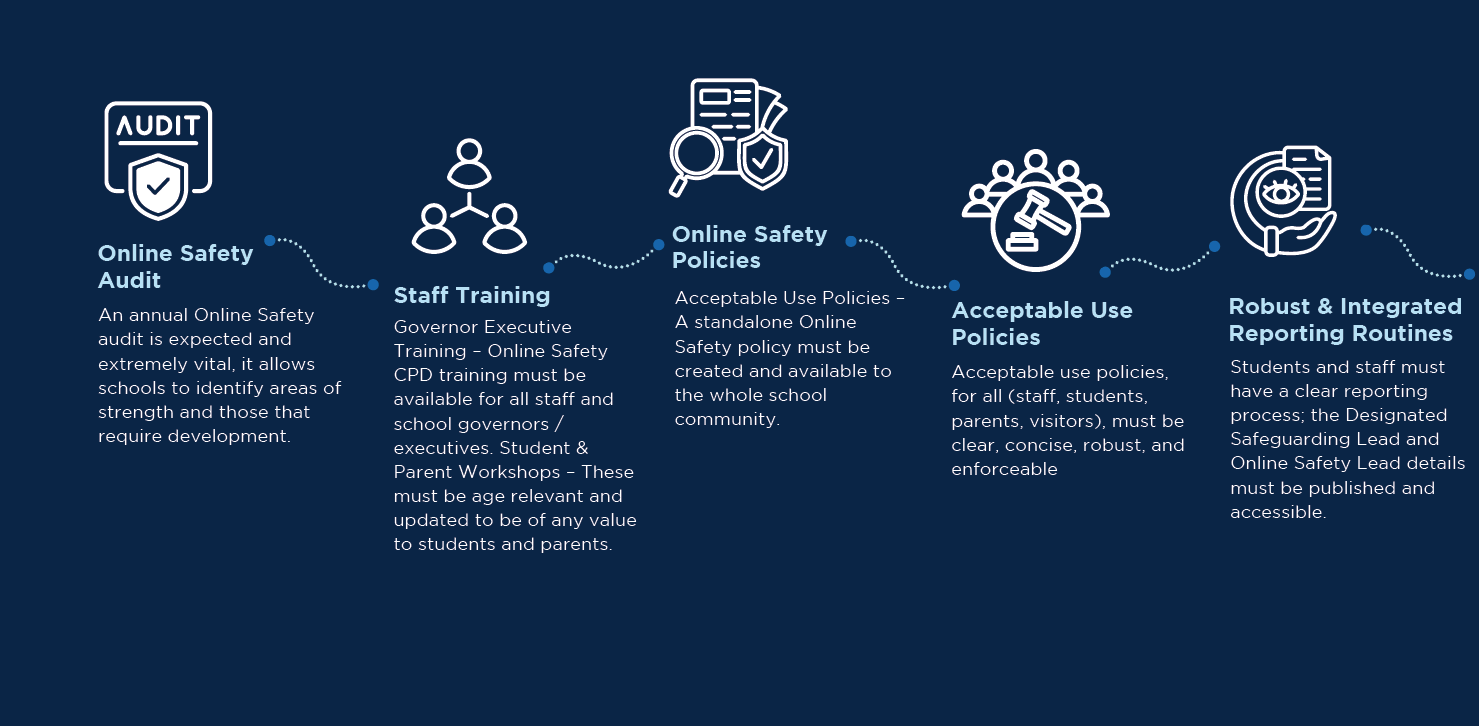
HOW IS THIS MANAGED?
Whilst the responsibility of online safety falls on the Designated Safeguarding Lead (DSL), or the Online Safety Coordinator (OSC), achieving best practice must involve, Governors / Executive / Directors – Senior Leadership Team – DSL / OSC – Staff – IT – Parents – Students, “The Whole School Approach.” Creating and implementing an effective whole school approach to online safety is not easy, and requires dedication, commitment, and understanding of the current online safety guidelines, statutory requirements, and recommendations.
The whole school approach can be described as; creating a culture that incorporates the principles of online safety across all facets of school life. Schools must seek to achieve best practice in supplying online safety within schools from workshops for students, staff, and parents to robust filtering monitoring and reporting practices. Employing the online safety principles consistently will allow for best practice to be exhibited. This includes expecting the same standards of behaviour whenever a pupil is online at school – be it in class or using their own device.
Like the Internet, online safety is here to stay. Schools should not wait for the next school Inspection and instead, should seek the most accurate and relevant online safety training to ensure they are keeping the whole school community safe. This commitment will help ensure the safety of the entire school community while protecting students’ wellbeing and safeguarding their mental health.
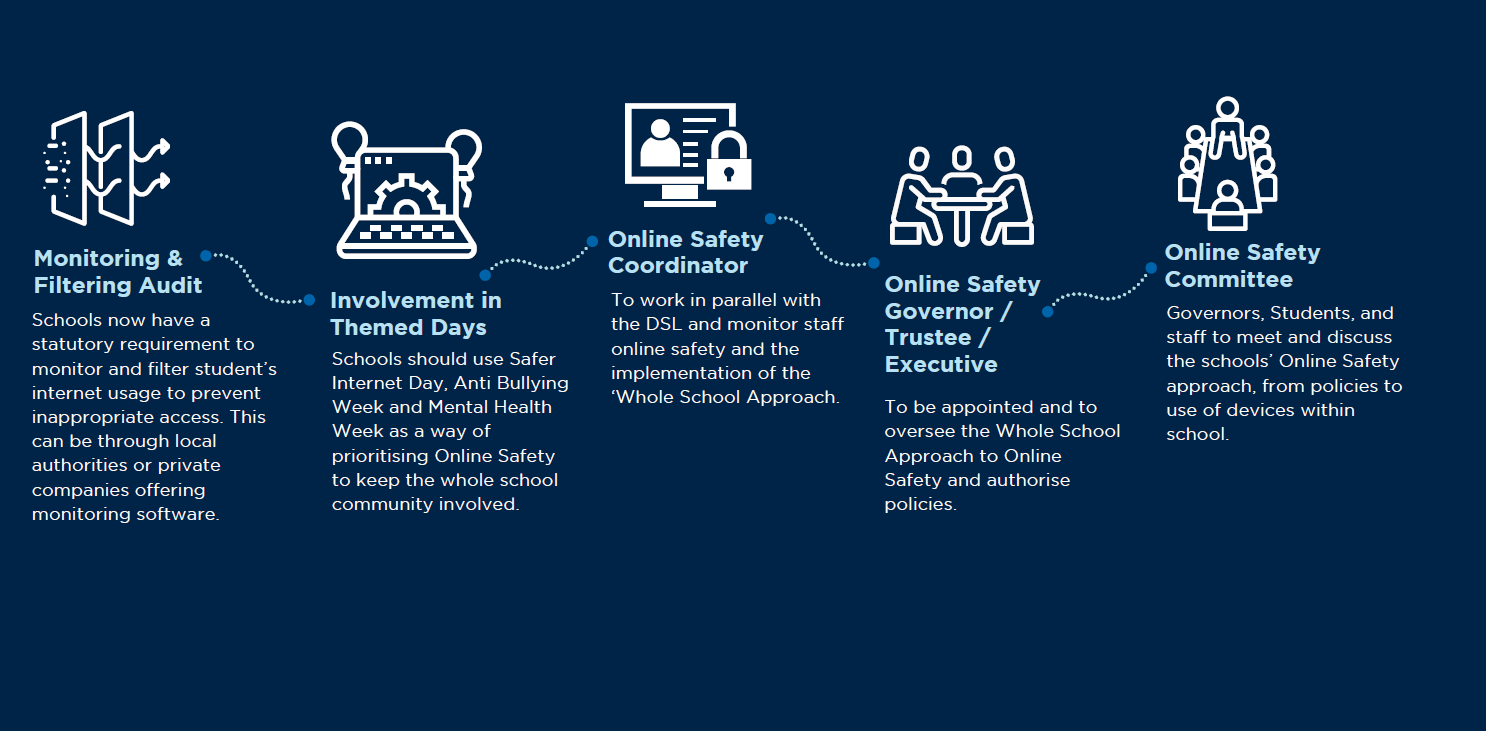
Professional Development That May Be of Interest:
Get a special discount by quoting code AISLMALL during CHECKOUT.
AISL Academy – Professional Growth & Development

AISL Academy is a global learning professional development platform for educational specialists who will have access to the latest and best practices of pedagogy, professional learning and social development, within an international, interactive and interconnected setting. Built upon AISL Harrow Schools’ pillars of strengths and excellence, the Academy is a collection of high quality and high impact certified and accredited courses, dedicated panel discussions and shared learning events, targeting educators including but not limited to international education professionals, and educators of both international and bilingual K-12 education.





